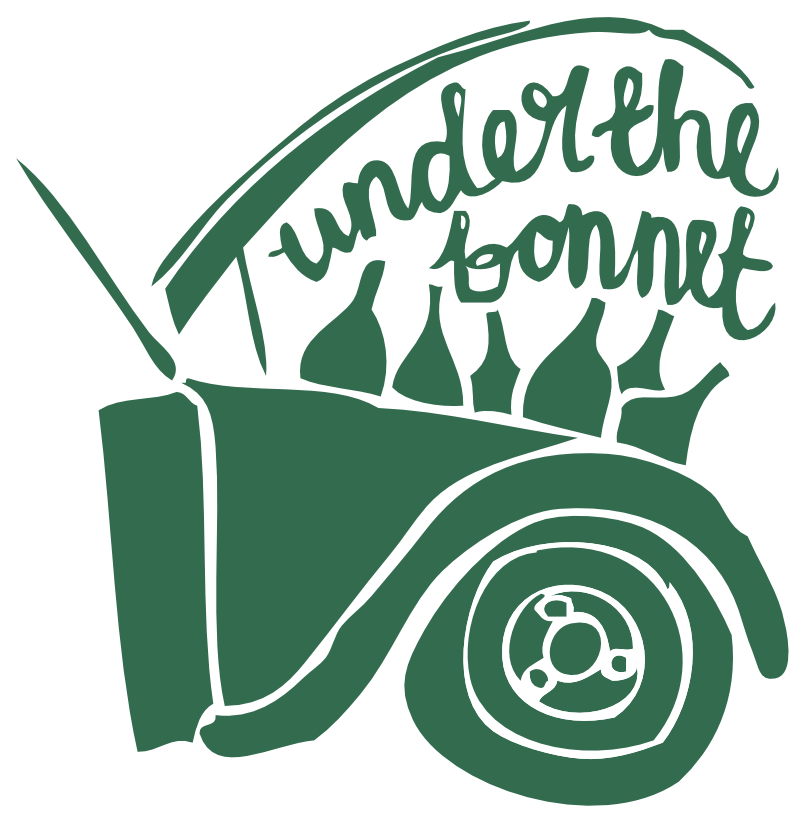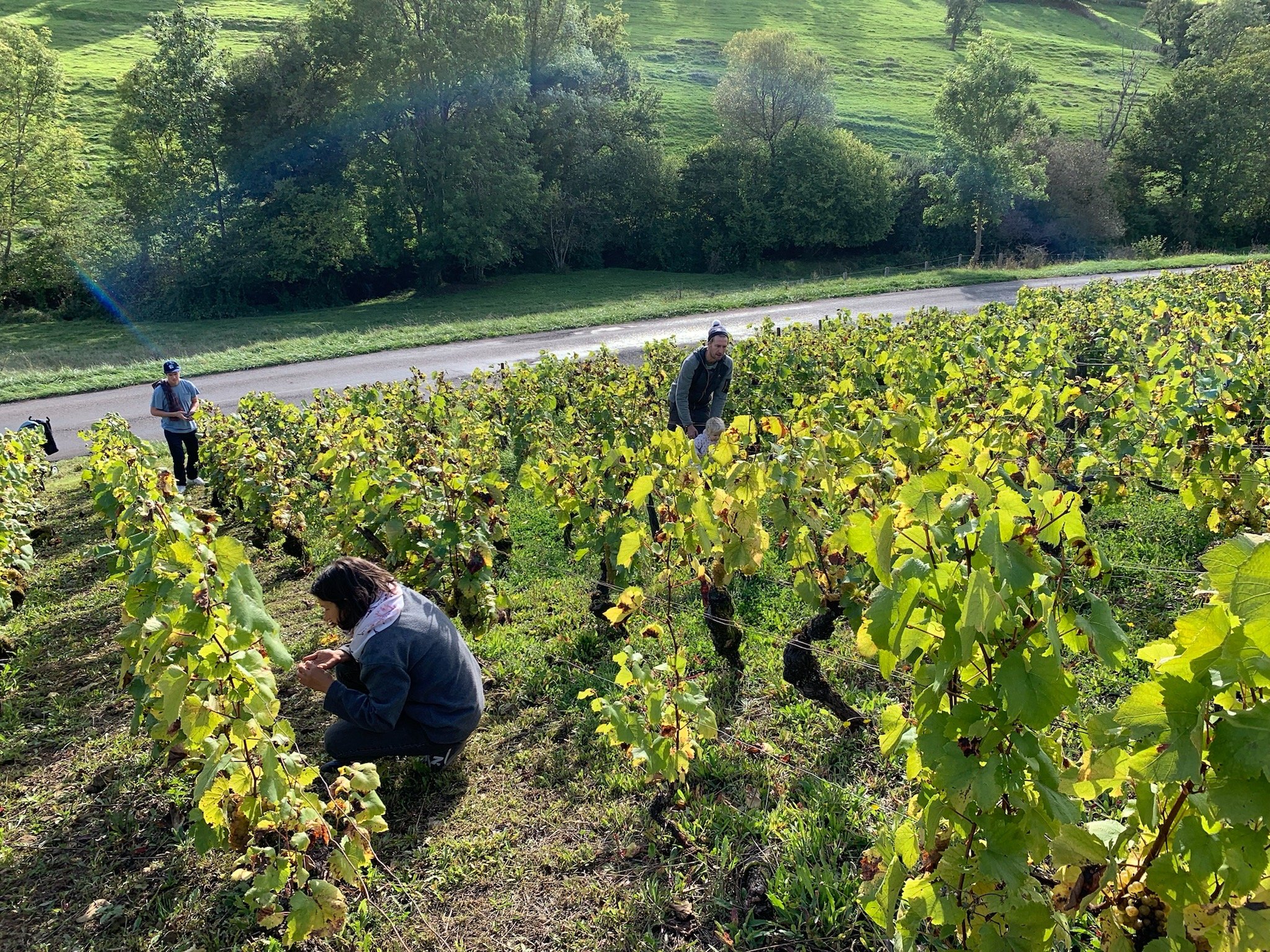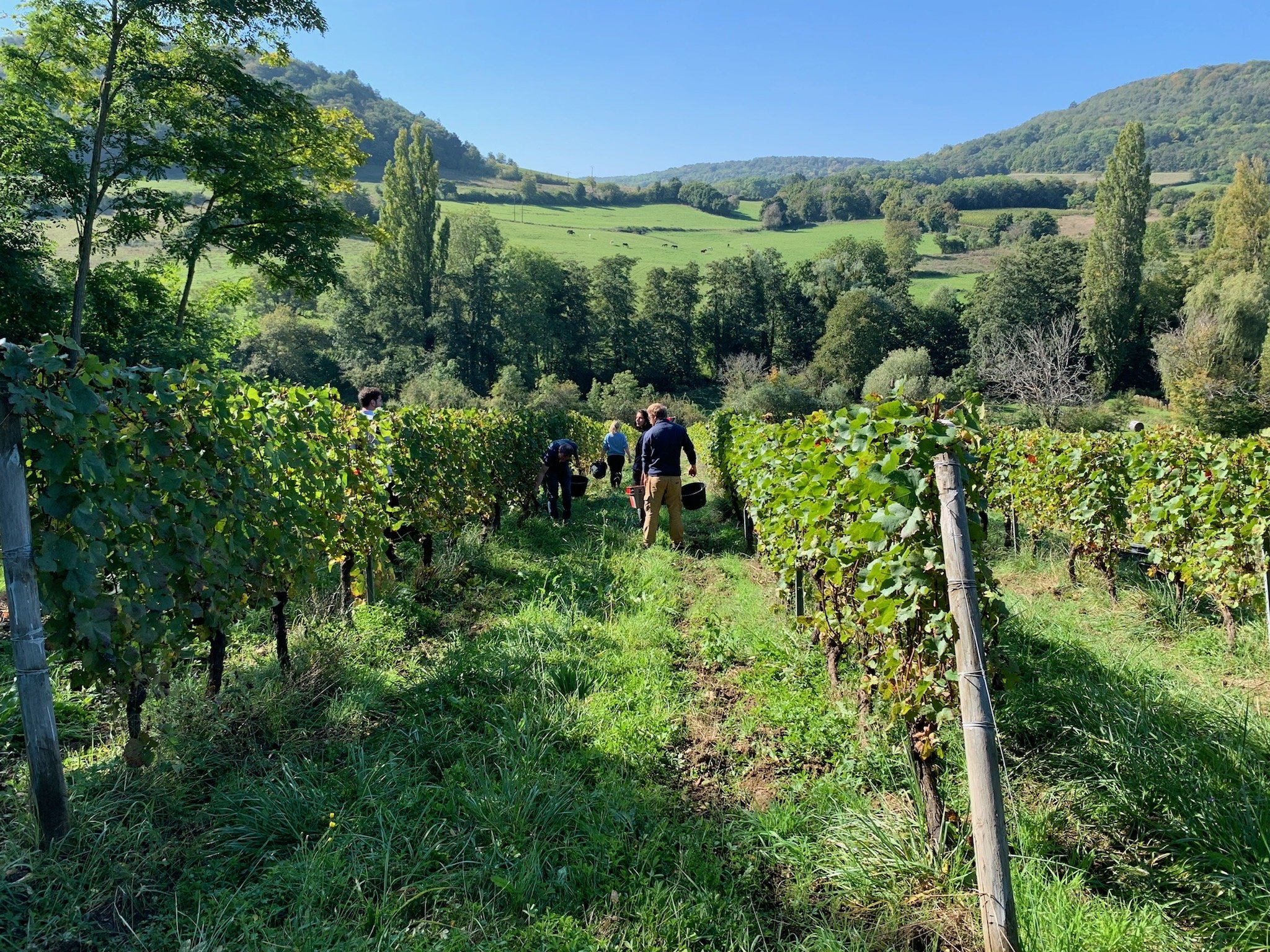We're excited to release the 2020 Hautes-Côtes Nature from Domain Dandelion! In 2020 Morgane & Christian made just one Pinot from their seven parcels in the Hautes-Côtes de Beaune, (one of which is planted exclusively with Aligoté, picked for another wine).
An easy, dry year in the vineyard with low disease pressure, the wine shows the darker maturity of a warm summer. With a little hydric stress towards the end of the growing season, the 2020 has more of the structure that will really reward patience in the cellar!
100 percent whole-bunch, slowly and gently basket pressed after a two-week maceration, aged for one year in old barrels. Bottled via gravity with no fining, filtration or sulphur.
With Morgane, we talked through each of their 7 micro parcels, to get a clearer picture of the makeup of the 2020 Hautes-Côtes Nature. Scattered across the hills of the Hautes-Côtes de Beaune, their surface now totals just under 3 hectares, with Beaune's limestone as the bedrock beneath each.
"For all the parcels that go to the Pinot, they're all fermented in more or less the same style. We put them whole bunch in tank, with a pied du cuve from our own grapes, and then macerations times differ depending on how vigorous those vineyards are. If one is more vigorous, it tends to ferment quicker, and their macerations are shorter. Nothing macerates for longer than two weeks."
"Whereas the less-vigorous, older vineyards will naturally have a slow fermentation. Its important to keep these ones warm actually, so we bought some electric blankets to wrap around the tanks to help the fermentation go through. If they stagnate or that ferment is too long, that's when you risk bacteria taking over, so we try to keep these moving! Also, their stems are much riper, yellow and brown, so we can leave these macerating longer, we know they won't bring much green-ness to the juice."
The Parcels:
"La Rave" - 18 ares - Pinot Noir (Planted 1990s)
"La Rave is above the village of Meloisey. Here the vines are planted much higher, which is quite common in the Côtes de Beaune. But the density is much lower, at 2300 vines per hectare compared to the allowed density of 10,000/ha. This one has heavy soil and its very steep, so its hard to plough with our horses. It's a heavy clay, with limestone and a little sandstone."
"We're facing south/south-west here, and it's very sensitive to frost- that's part of the reason the vineyard is planted so high, they were hoping to avoid frost up here. We have a river just a few metres from the bottom of the vineyard, and it's surrounded by forest- a nice spot to work!"
"It produces very good quality, small bunches but really at pretty low yields. We're planting a vineyard in March as we think might have to give up La Rave in the future. It's just rented at the moment and its so much work for not a huge amount of grapes!"
"Yvette" - 22 ares - Pinot Noir (Planted 1982)
"Yvette is situated just below the cliffs of Meloisey, facing east. The soil is very nice here, clay on limestone but quite soft, and easy to plough. This is the highest altitude of the parcels, and the production is pretty good here. We took it over in 2018, and pruned quite hard - back to just 4 buds per vine. We've done lots of ploughing and sewing cover crops, all to help with bringing back more vigour. Now it's producing really nice bunches."
"Bois Prevot" - 25 ares - Pinot Noir (Planted 2003)
"These are our youngest vines and they're very vigorous, too vigorous! We're trying to calm it down a bit. Normally we fertilise the soils with chicken or cow manure every two or three years, but these young vines absolutely don't need it. These are tricky vines though. The sugar can get very high, the stems stay green, rather than mellowing like the older ones, so it's not as balanced. These tend to give juice pretty high in potential alcohol, but with lovely fruity aromas."
"Vaucuriens" - 25 ares - Pinot Noir (Planted 1983)
"Here we're situated above Pommard, east-facing and high up in the middle of pine forests, its very isolated. It's actually classified as Coteaux Bourguignons. It's really one of the best sites we have, with lots of broken limestone. The small stones give good drainage over clay. We started working these in 2018, and that's the vineyard we make our Pet Nat from. It's a great vineyard and makes very good pet nat- we just have to be sure the boar and deer don't eat all the grapes!"
"Vigne de Rose" - 55 ares - Pinot Noir (Planted 1960s)
"We took this over the same month our daughter, Rose was born, in October 2019 hence the name! We're not 100% sure when these were planted, but it looks to be the mid 60s. Here we have quite specific sandy soils mixed with clay on limestone. Facing south, we're surrounded by more forest and lots of cows! We also bought a little plot of land next to here and we're planting another vineyard, and an orchard that we'll be making cider from."
"Vigne de Crêt" - 25 ares - Aligoté (Planted 1940s)
"We took this over last year, planted with Aligoté from the 1940s. It's very old, and just below the church we live next to, so we can see the vineyard from our garden. Despite its age, it seems to yield quite a lot of bunches! The soil here is really like a rich garden soil, they must have been growing veggies, very dark and soft. It balances really well with the Aligoté from our other vineyard, the Gouttes d'Or."
"In the Goutte d'Or the Aligoté really struggles to grow, it's super steep, but it makes beautiful yellow, freckled berries- like the proper Aligoté Doré- but it can be a pain to ferment, it's quite low nitrogen. The Aligoté Goutte d'Or can sometimes be a bit funky because of that slow fermentation. So we were really happy to take over the Vigne de Crêt, because it will really help the old Aligoté; we'll ferment them together."
"Goutte d'Or" - 13 ares Aligoté (Planted 1944), 25 ares Gamay (Planted 1920s) 9 ares Pinot Noir (Planted 1966)
"The Goutte d'Or is very steep, and these are some of our oldest vines. There's lots of missing Aligoté vines here, but you can already see the bedrock so I can't plant any more. Maybe one day I'll have the strength to dig some holes!"
"The Pinot here gives such perfect maturity. When we harvest we always look at the colour of the seeds and how they taste. In an old vineyard like this where the maturity is balanced, the seeds will go from green to yellow to brown, whereas a young vineyard that is too vigorous will stay super green for a long time, and then switch to brown really quickly (sometimes they don't even go brown). The old vines like these, they really give the backbone of our wine."
"We have 25 ares of Gamay here, with pretty low vigour, they barely produce! But we're working on it."
"So far, all these old vines were not ploughed, I used to just cut the grass by hand. But we saw that the vigour was going down year after year, and we decided to start ploughing here. The Pinot and Aligoté we can't fit the horse between, so we use an old little engine from the 50's called a Treuil to plough these rows. The Gamay has a little more room for our horses to do a u-turn, so they plough the rows Gamay. "The idea of course being that if we plough small amount of times each year, you get much more seed diversity. You help to recreate that chaos to get everything growing, instead of more monoculture you get with cutting the grass."
NOW AVAILABLE
NEW 2020 - Hautes-Côtes-de Beaune - Pinot Noir
100 percent whole-bunch, basket pressed after a two-week maceration, aged for one year in old barrels. Bottled via gravity with no fining, filtration or sulphur.






